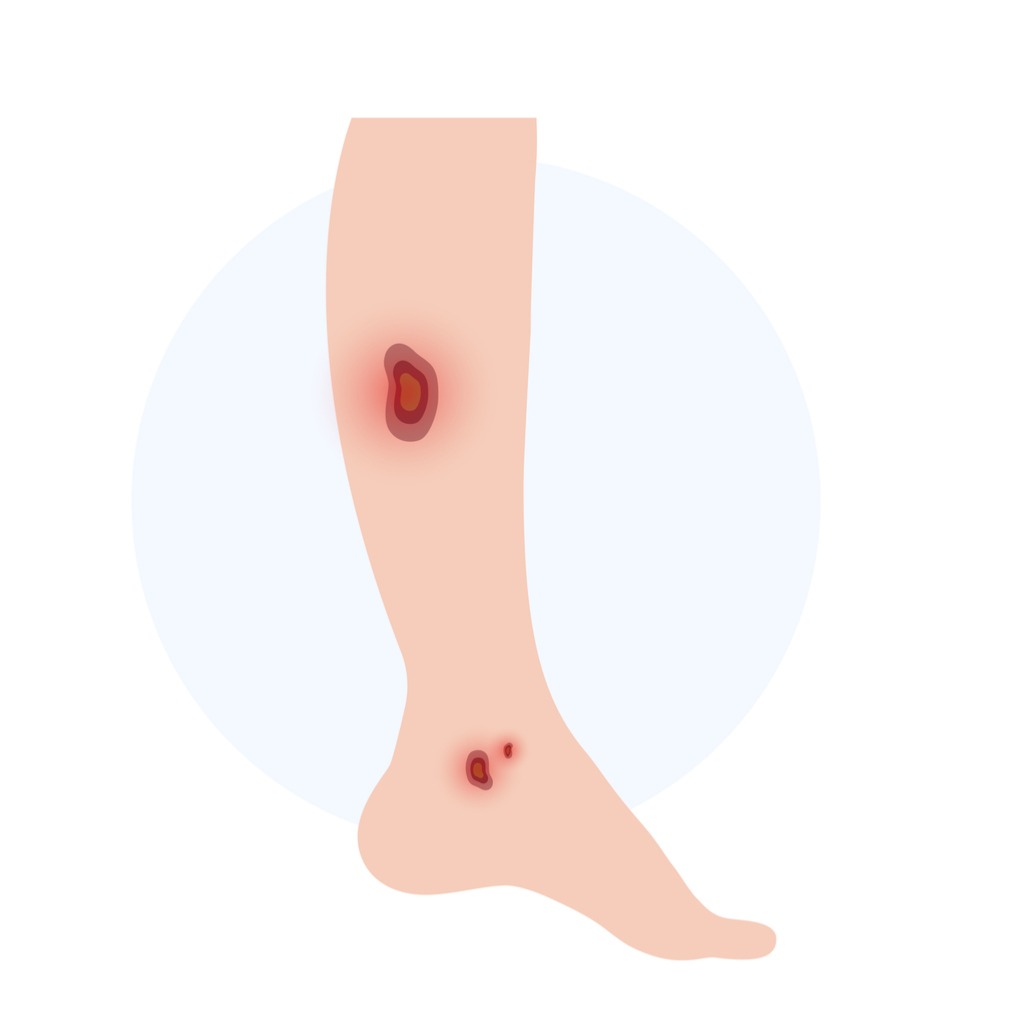Living with chronic kidney disease (CKD) can bring unique challenges, including the risk of rare but serious complications. One such complication is calciphylaxis, a condition that can be painful, difficult to treat, and potentially life-threatening. While calciphylaxis is uncommon, it’s important for patients with advanced kidney disease to understand what it is, what causes it, and how it can be managed.
What Is Calciphylaxis?
Calciphylaxis, also known as calcific uremic arteriolopathy, is a rare disorder where calcium builds up inside the small blood vessels of the skin and fat. This causes the vessels to harden and narrow, leading to poor blood flow. Without healthy circulation, painful skin lesions can form and may progress into ulcers that are slow to heal.
Although calciphylaxis is most often seen in patients with end-stage kidney disease on dialysis, it can also occur in people with earlier stages of CKD or, rarely, in individuals without kidney problems.

Signs and Symptoms of Calciphylaxis
Recognizing the signs early is essential. Common symptoms include:
- Painful skin lesions: These usually appear on the legs, thighs, abdomen, or buttocks.
- Purple or mottled patches: Areas of skin may look bruised before breaking down into ulcers.
- Non-healing wounds or ulcers: These can increase the risk of infection.
- Severe pain: Pain is often disproportionate to the visible skin changes.
If you have kidney disease and notice new skin lesions or severe unexplained pain, it’s important to alert your healthcare provider right away.
What Causes Calciphylaxis?
The exact cause of calciphylaxis isn’t fully understood, but it’s linked to imbalances in calcium, phosphorus, and parathyroid hormone (PTH) that occur in advanced kidney disease. These imbalances contribute to calcium deposits in blood vessels and soft tissues.
Risk factors include:
- Chronic kidney disease and dialysis
- Abnormal calcium or phosphorus levels
- Secondary hyperparathyroidism (overactive parathyroid glands caused by CKD)
- Use of certain medications, such as warfarin (a blood thinner)
- Diabetes and obesity
- Female gender (calciphylaxis appears more common in women)
Because many of these risk factors overlap with kidney disease itself, patients with CKD are more vulnerable.
How Is Calciphylaxis Diagnosed?
Diagnosis often begins with a physical exam and review of symptoms. Since calciphylaxis can mimic other conditions, additional testing may be needed:
- Skin biopsy: A small sample of skin may be taken to confirm calcium deposits in blood vessels.
- Blood tests: Checking calcium, phosphorus, PTH, and kidney function.
- Imaging tests: Sometimes used to detect vascular calcification.
Prompt diagnosis is key to preventing complications such as infection, sepsis, or further tissue damage.
Treatment Options for Calciphylaxis
Treating calciphylaxis is complex and usually requires a team approach. Management often includes:
1. Balancing Calcium and Phosphorus
Careful control of dietary phosphorus, dialysis prescriptions, and medications like phosphate binders can help reduce mineral buildup.
2. Medications
Sodium thiosulfate is sometimes used during dialysis to help dissolve calcium deposits.
Adjustments to medications that may worsen calciphylaxis, such as warfarin, may also be considered.
3. Wound Care
Specialized wound care is critical to prevent infection and help ulcers heal. This may involve wound dressings, debridement (removal of dead tissue), or antibiotics if infection is present.
4. Pain Management
Because calciphylaxis can cause severe pain, appropriate pain control is an important part of care.
5. Parathyroid Management
If overactive parathyroid glands contribute to abnormal calcium and phosphorus levels, treatments may include medications or, in some cases, surgery.
What Patients Can Do to Lower Risk
If you have kidney disease, you can take steps to reduce your risk of calciphylaxis by:
- Following your dietary recommendations, especially around phosphorus and calcium intake.
- Attending all dialysis sessions as prescribed.
- Taking medications exactly as directed.
- Monitoring for any new skin changes and reporting them promptly.
Staying engaged in your care is one of the best ways to protect yourself from complications.
Compassionate Kidney Care You Can Trust
At The Kidney & Hypertension Center, we know that conditions like calciphylaxis can feel overwhelming. While rare, it is a serious complication of kidney disease that requires careful, coordinated treatment. Our experienced team provides compassionate, comprehensive care for patients with CKD, dialysis needs, and related complications.
If you’re living with kidney disease and have questions about your risk for calciphylaxis, schedule an appointment with us today.




